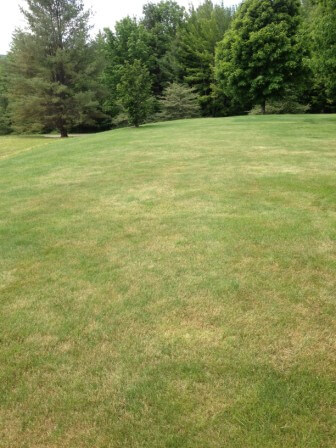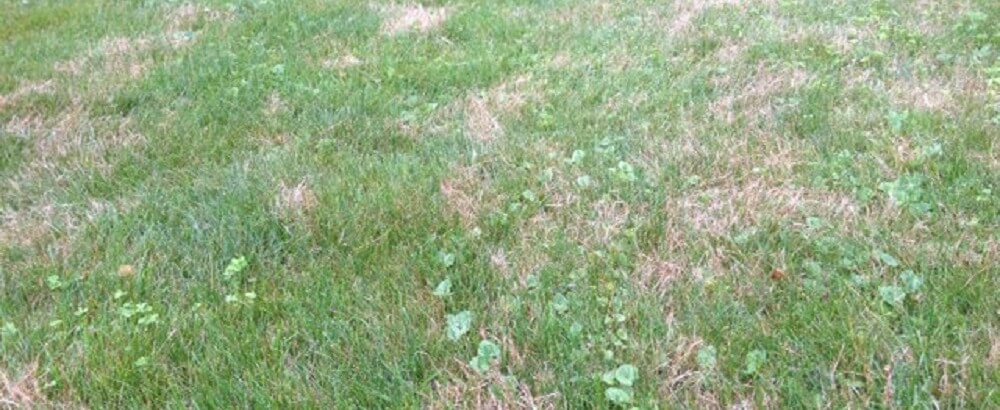Nothing can spoil the fine view of a healthy lawn than an abrupt case of red thread. Appearing from spring until fall and typically confined to humid or wet weather, red thread can pop up in a short period of time with a characteristic fist-sized patch of pink emanating out of the ends of the grass blades. This discoloration later turns tan or light brown. Red thread can be spread to other lawn areas if cut when wet because it is a moisture-loving fungal disease. Red thread is a very common lawn disease and can really make a nice lawn look rather unsightly. Fortunately, keeping your lawn healthy is the best prevention: a.m. watering, regular mulching of the clippings for a natural fertilization, and not mowing when wet.
 Unfortunately, some grasses like fine fescue are more prone to becoming infected with red thread than say bluegrass. Commercial mowing can also spread the disease from one infected lawn to another under the right conditions, such as wet grass. The good news is red thread is primarily an esthetic disease, not generally causing any long- term damage, unlike brown or summer patch. (See http://www.mrgrassblog.net/2013/06/11/lawn-diseases/ for additional information on summer or brown patch.) The characteristic pink patches are most noticeable early in the morning while dew is still present. Red thread actually grows out of the tips of the grass blade appearing like pink cotton candy. A fungicide can be used to clean up the disease, especially if there is a low tolerance to how it looks or perhaps a special event is planned and the lawn needs to be in pristine shape.
Unfortunately, some grasses like fine fescue are more prone to becoming infected with red thread than say bluegrass. Commercial mowing can also spread the disease from one infected lawn to another under the right conditions, such as wet grass. The good news is red thread is primarily an esthetic disease, not generally causing any long- term damage, unlike brown or summer patch. (See http://www.mrgrassblog.net/2013/06/11/lawn-diseases/ for additional information on summer or brown patch.) The characteristic pink patches are most noticeable early in the morning while dew is still present. Red thread actually grows out of the tips of the grass blade appearing like pink cotton candy. A fungicide can be used to clean up the disease, especially if there is a low tolerance to how it looks or perhaps a special event is planned and the lawn needs to be in pristine shape.
Mulching your clippings helps recycle valuable organic matter and actually helps keep the lawn more stable in terms of year-round health. Grass clippings help reduce peaks and valleys in a fertility program or when unusually wet weather causes a rapid growth rate, depleting the bank of food available to your lawn. Cutting at 3” also insures a more supportive root system, ideal when hot weather hits, keeping the soil surface cooler and inhibiting weed seeds from germinating.
 If you think you have a case of red thread disease, give your local lawn care provider a call and have it checked out to confirm this diagnosis. Like a common cold, red thread can pop up and then just go away, so don’t fear.
If you think you have a case of red thread disease, give your local lawn care provider a call and have it checked out to confirm this diagnosis. Like a common cold, red thread can pop up and then just go away, so don’t fear.


